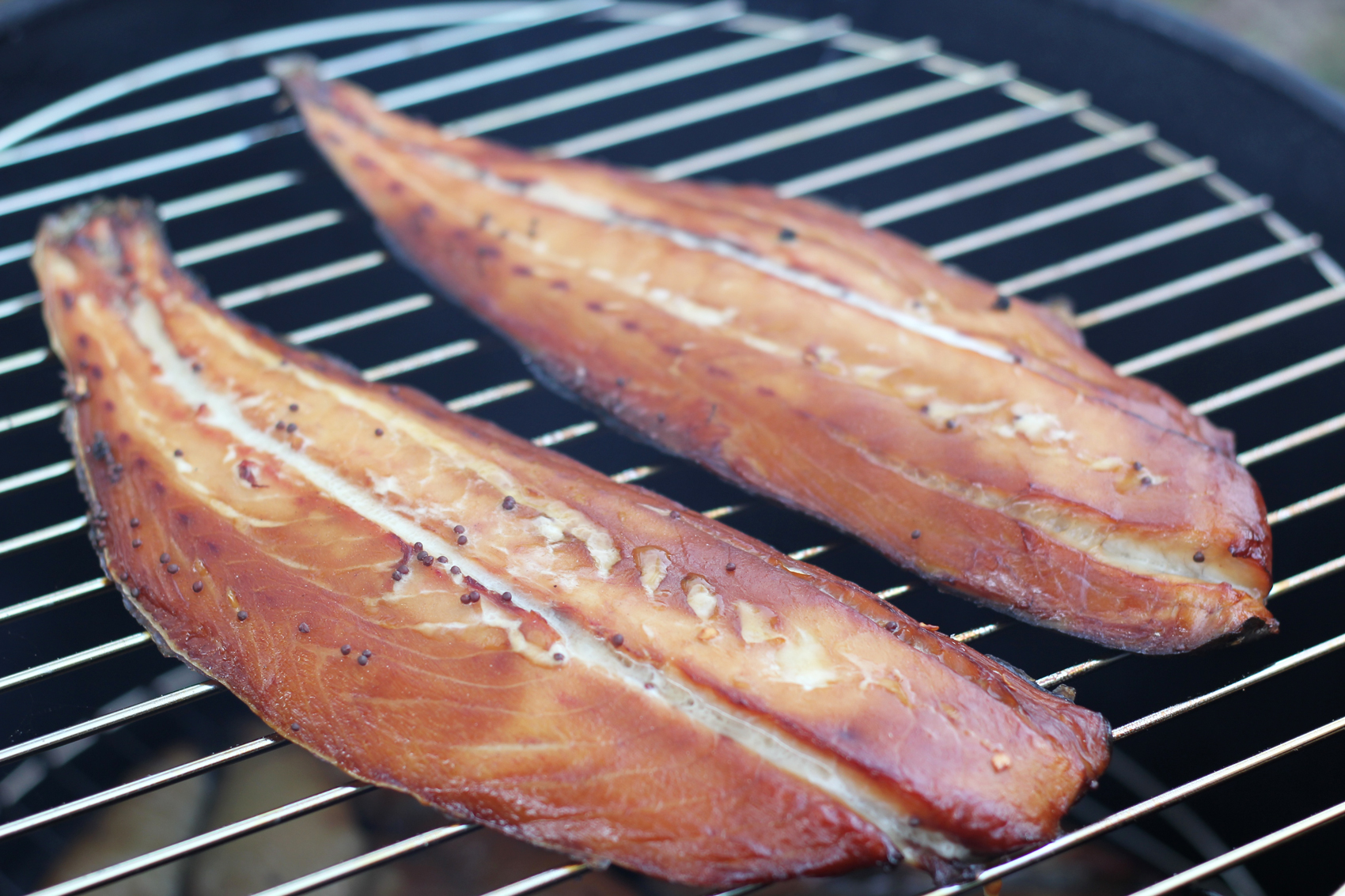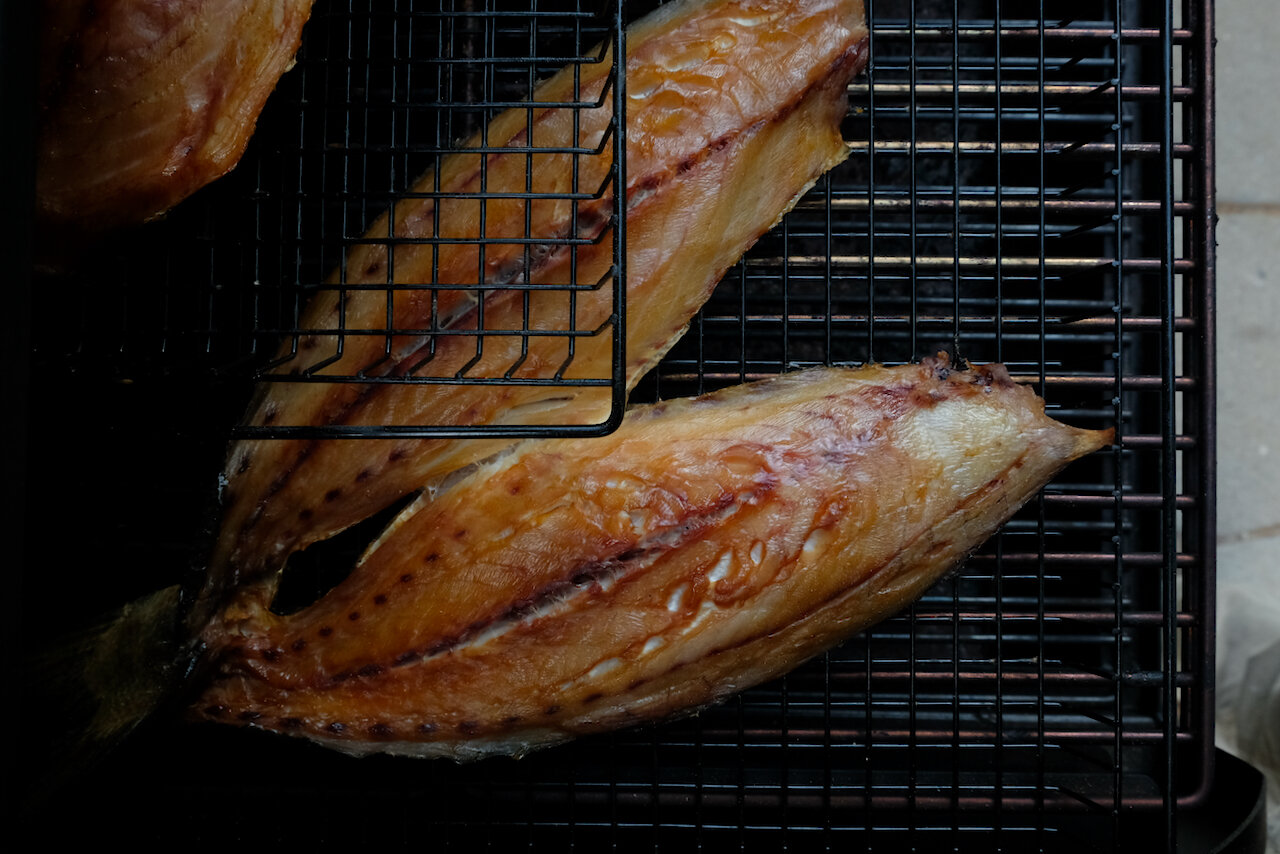

Smoke doesn’t like to stick to wet surfaces, and the heat of the smoker can drive moisture out of the fish. You should leave the fish in the brine for at least four hours, but it’s okay to let it go longer (even a couple of days if you’re not going to get to it right away - the brine is a great preservative also.) Just remember that the longer you leave it in the brine, the saltier it may be. It adds to and enhances the flavor, of course, but it also helps the fish to retain moisture during the smoking process. Cover and refrigerate while brining - a minimum of four hours.īrining the bluefish is important. Pour over the bluefish to cover in a shallow pan and add the bay leaves, mustard seed, and peppercorns. Add the salt and sugar and stir or shake to dissolve completely. You can make as much as you’ll need to completely cover the fish - I usually make it by the quart:Ĭombine the water and soy sauce. You can use either fresh or smoked filets.Start by making a brine. Use a tested recipe for pressure canned fish, and throw in a dash or two of hot sauce. But, if you are an avid canner, and know the difference between hot water bath canning and pressure canning, I highly recommend giving it a shot. We’ve long debated posting a recipe for pressure-canned spicy bluefish, but frankly, pressure canning is so incredibly different from the hot water bath canning most people are familiar with, and we don’t want to take the risk of someone using the water bath method and getting sick. Eat what you can fresh, and if you find yourself coming off a long day on the water with more than you can eat that night, we’ve found the best way to preserve a bluefish bounty is to either can it, with lots of spicy hot sauce, or smoke it and then freeze it. No matter how well you take care of the fish before you fillet it, when thawed, the flesh gets mushy and takes on a stronger smell and flavor. With so much good to say about it, bluefish does have one drawback- it does not freeze well. We pack the fish with plenty of ice in the cooler, and then, back on shore, keep the fillets on ice as we clean them. This accomplishes two things- the fish dies quickly, and you’ve bled the meat. We’ve used a pick, a bat and the lid of a cooler to kill bluefish quickly, but our new favorite method is reaching under the gill plate and ripping out the gills.

You need to get these fish out of the water, dispatched, and iced immediately. We catch our blues right around the time the water in the shallows of the Chesapeake Bay hits the mid 80s. Don’t be that person- all fish will spoil quickly when treated poorly, but the fattier the fish, the better care should be taken to keep it cold and fresh. I’ve seen people catching blues and tossing them into an empty bucket on the hot sand and then complain that they don’t like eating them. Bluefish is best when it’s kept on ice and eaten on the same day. They have a higher fat content than some other fish, which is what makes them so tasty, but that fat can also spoil quickly, giving it a fishy taste. That night, in camp, we had the most incredible bluefish tacos.īluefish gets a bad rap for being fishy, but handled correctly and eaten fresh, they are some of the sweetest, most delicious fish around. We pulled anchor and headed to harbor, the tops of the swells just barely breaking over our stern. The spadefish hanging out on the rocks just a few feet below kept taunting us, but the fun was over and the wind had started to blow out of the west. We kept pitching and pitching, hoping to catch a few more to round out our limit, but they had moved on. We had 26 blues in the box quicker than it took me to write this. Our friend Cam got bitten AND hooked by the same fish, and just about the whole boat had a sheen from the fish slime, blood and tiny scales that covered everything we touched.Īnd just like that, it cut off. At the time, the limit for blues was ten per person, so we pretty quickly filled our cooler. We lost more tackle than we’d care to admit, and the bucktails that survived were completely stripped by their sharp teeth- not even the paint was left. The fish were everywhere, and the surface of the water boiled with the violence of their feeding activity. If you haven’t been in the middle of a blitz, written word will fail to convey the excitement and chaos of it. Out of nowhere, a big school of bluefish cruised through, and we quickly re-rigged with bucktails (no leader- we didn’t bring any) and started casting. We launched our tiny boat and headed a mile offshore on a dead calm day to some structure that we thought might hold spadefish.

Our most memorable bluefish day was a few years back, when we were still getting our feet wet with fishing in the Chesapeake Bay.


 0 kommentar(er)
0 kommentar(er)
